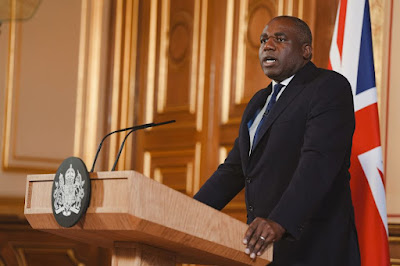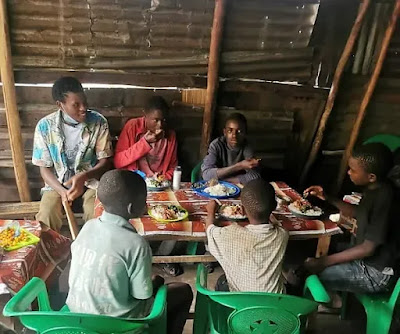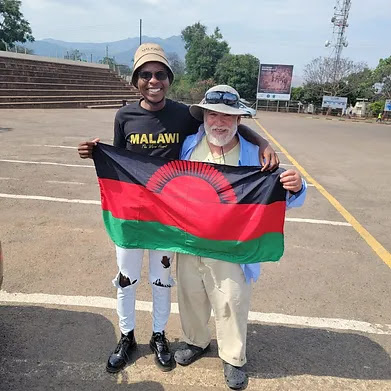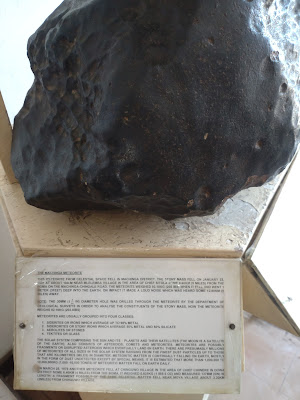The Locarno
Speech, delivered by Foreign Secretary David Lammy on 9th
January, lays out a bold new plan for British foreign policy in 2025 and
beyond, taking what he repeatedly referred to as an approach of ‘progressive
realism’. Progressive realism, Lammy explained, means “taking the world as it
is not as we wish it to be. Advancing progressive ends by realist means.”
Building on the history of Ernest
Bevin’s shaping of the UK Foreign Office in the immediate aftermath of the
Second World War, Lammy echoed the message of the Attlee government manifesto
in that time, borrowing from Attlee’s manifesto slogan “Let Us Face the Future
Together”.
It was a pointed move to
open the speech with this call back to the Attlee’s post-war government, the
government remembered
for navigating the decline of the British power on the world stage, whilst founding
the NHS, facilitating the overhaul of the welfare system, and dramatically shifting
Britain’s global status, both through the oversight of the beginning of the
decolonisation agenda and supporting the US Marshall Plan to rebuild Western
Europe in one of the first large-scale aid packages seen to
operate similarly to modern humanitarian and development aid.
 |
| Foreign Secretary David Lammy delivering the Locarno Speech, 9th January 2025. Source: Gov.uk |
Lammy was keen to highlight the similarities between current global geopolitics and the emerging Cold War in 1945, using the first half of the speech to discuss Russia’s invasion of Ukraine extensively, doubling down on the need for increased defence spending and a strengthened NATO to protect Europe from further Russian aggression. One interesting acknowledgement was the need for the UK to situate itself in a more global position, collaborating with countries beyond the historic Western alliances framed by NATO, the EU, and AUKUS. In particular, Lammy highlighted the need to engage more effectively with countries in the Global South:
“And
with the Global South, progressive realism means working together – no more
lectures. Showing respect. … To shape 2035, we must offer a new vision of
partnership, which approaches those countries as equals.”
To highlight how he intends
to see the FCDO operate with partners in the Global South, Lammy highlighted
the successes of recent trips to Indonesia and Nigeria. In Indonesia, FCDO
officials met with Indonesian companies who were being supported by UK funding
to “spearhead
green innovations”. The visit to Nigeria saw the signing of a new UK-Nigeria
Strategic Partnership, which the UK government claims will “cover the
breadth of the UK-Nigeria areas of shared cooperation from growth and jobs to
national security, tackling the climate and nature crisis to strengthening our
people-to-people ties”. It is in this Nigerian example that Lammy sees a new
model for engaging with partners in the Global South, focusing on economic
growth and national security as core pillars of future UK overseas activity.
It is on the question of ‘national
security’ where another new FCDO approach has been laid out:
“On
irregular migration, the FCDO is critical to trying to solve this issue. A
realistic strategy involves transactional, hard-headed diplomacy and to agree
with partners smart interventions at every stage along the international people
smuggling pathway so together we can strengthen borders, smash the gangs, and
get those with no right to be here returned to their countries.”
This approach demonstrates a
much tighter working relationship between FCDO and Home Office, and Lammy
acknowledged the creation of a new ‘joint irregular migration unit’, established
in collaboration with Home Secretary Yvette Cooper. The joint irregular
migration unit is backed by the Border Security Command, established in mid-2024,
with a £150 million budget taken from funds previously earmarked for the Tories
ludicrous Rwanda Plan. This symbolises the continued trend of foreign aid
funding in the UK being
used to support refugees and asylum seekers in the UK itself. In 2023, £4.3
billion of the UK’s aid budget was spent on UK shores, which accounted for
greater expenditure than the £4.1 billion spent on development aid overseas. My
immediate concern following the announcement of this closer working
relationship between the Home and Foreign offices is that it will lead to a
greater funding for law enforcement activities at the country’s borders aimed
at “smashing the smuggling gangs” (as Lammy described the unit’s mandate),
rather than on crisis prevention in asylum seeker’s countries of origin.
 |
| Home Secretary Yvette Cooper, co-lead of the new 'joint irregular migration unit'. By David Woolfall https://commons.wikimedia.org/w/index.php?curid=86630471 |
Throughout this speech,
Lammy highlighted the need for the UK to take a “progressive realist” approach
to foreign policy, but doubling down law enforcement as the mechanism by which
migration can be reduce demonstrates a wilful ignorance of reality. Increased
law enforcement does not reduce migration numbers, but it does decrease
circular migration (where people travel to another country for work and then
return home on a seasonable basis, for example) and migrant deaths. And, as we
have seen time
and again with various
forms of prohibition, making any given activity illegal, when there is a
clear market for that activity, only serves to support gangs to profit from
providing that service. Some people want to migrate to a different country,
others are forced, but regardless of the reasons for choosing to leave, people
will use the options that are available to them in order to move. Migration is
a fundamental human
activity. It has always happened, and it always will. With climate
change and worsening
conflict around the world, it will continue to increase.
A ’progressive realist’
approach to migration will acknowledge that our current and future reality is
one in which people will be forced to move from their homes at an increasing
rate, and that criminalising that activity will not slow the numbers of people
desperate to move. A ‘progressive realist’ approach will accept that even if
Labour are successful in reducing the numbers of small boat crossings
in the coming months and years, this will be seen as a failure by the braying
lunatics on the far
right, who have seized the UK
national discourse on migration in a chokehold. Labour cannot win political
points by borrowing from the anti-immigration rhetoric of the right. Theresa May’s
‘hostile
environment’ failed. Johnson and Sunak’s Rwanda
plan failed catastrophically. And as soon as the Tories were out of power,
they immediately
began attacking Labour for being ‘soft’ on immigration.
Reducing ‘illegal
immigration’ is simple. Reforming
the legal schemes by which people can move between countries will help to
streamline immigration processes, and enable both clearer control of the
immigration system on the part of the host country, and simplify the process
for people wanting to move. For asylum seekers, reducing
the backlog of claims requires a clear, functional approach to assessing
eligibility and delivering a positive or negative response. This can only be
done if politicians are willing to allow the system to work as intended, and
not meddle with nonsense, time-consuming programmes like the Rwanda policy. But
again, this is the responsibility of the Home Office to effectively manage, not
the FCDO.
The FCDO’s focus should be on the provision of humanitarian and development aid internationally where it is most needed, and on the partnership with foreign countries for mutual benefit, to support economic growth and sustainable development across the world. Today’s challenges are complex and global. Climate change does not acknowledge national borders, and so neither can its solutions. Conflict in Ukraine, the breadbasket of Europe, can exacerbate hunger in humanitarian contexts half a world away. Lammy is correct to acknowledge that the challenges faced by the Home and Foreign offices are interconnected, and that solutions will need to engage both the British public at home and the rest of the world abroad. But what we have seen in previous administrations, and what is being suggested in the focus on law enforcement to stop smuggling gangs, is that when politicians discuss the need to address the challenge of migration ‘holistically’, they nearly always mean transfer funds away from supporting people in their homes and instead further criminalising them when they do move.
People will always migrate,
and we should welcome that. But if we truly want to reduce the number of people
who are forcibly displaced by climate, poverty, or conflict, then we need to be
honest that hardening borders does nothing to support this. I’ve written
multiple times about the horrors that our governments inflict upon migrants,
from reinforcing the uptake of deadly
people-smuggling routes, failing to support
asylum seekers in camps, or to integrate
refugees into cities, all whilst the rhetoric
and violence
utilised against migrants of all stripes increases.
This approach to migration
has failed. Attempts to close borders and to ‘protect’ the receiving countries
that have been lucky enough to avoid climate catastrophe or conflict, so far, has
failed.
A ‘progressive realist’
approach to foreign and domestic policy would acknowledge this.
Lammy ended his speech with
a positive call to action:
“We
can be realists and optimists. We can seize the opportunities coming into view.
And we can show the world what a more progressive 2035 can be like and deliver
the promise of a decade of national renewal.”
But nothing in the
discussion of policy around migration offers optimism. It promises continued
criminalisation of migrants and punitive, legalistic responses that have failed
both the
migrants who have suffered at the hands of violent states, and citizens of
host countries who have been offered no clear solution to our own challenges in
the face of rising costs
of living, an ascendant
radical right, and increasing
pessimism about the future.
This is a shame, because I
believe Lammy demonstrated an understanding of what is necessary to build a
more positive view of the future for everyone, migrants and host community
members alike, earlier on in his discussion about the FCDO role in building
partnerships with countries from the Global North and South alike, on equal footing
and focused on addressing the needs of all humanity, prioritising
those on the frontlines
whilst building
resilience in those communities that are feeling the secondary and tertiary
impacts of displacement globally.
This concerns
all of us, and David Lammy said it best when he acknowledged that “progressive
realism means working together”.
That doesn’t mean
restricting the borders even further, or punishing those who have fled their
homes. People smugglers should be held to account, but stopping the current
smuggling gangs will not stop people trying to make the same journeys. What
might do that is working with communities on the frontlines of conflict and
climate change where they are, learning from them about what they need to build
a fulfilling life, and doing our best to support them to achieve that. This is
as true for communities in Darfur, the Donbas, Yangon, and Gaza as it is for
those here at home.
Today’s crises are
international in nature, and their responses will need to be as well. The new
foreign secretary appears to understand this, and the FCDO should be equipped
to serve people wherever they are in whatever way it can. ‘Protecting British
interests’ is not possible without this.
.jpg) |
| Barbadian Prime Minister Mia Mottley. By Palácio do Planalto from Brasilia, Brasil - 10/06/2022 https://commons.wikimedia.org/w/index.php?curid=119162038 |
In his speech, David Lammy, praised Barbadian Prime Minister Mia Mottley as a “pioneer” that the UK government would be proud to continue to partner with to “reform the global financial system”. Mottley has led the charge on climate financing to support the most vulnerable communities around the world, and has laid out a plan for Global North states to meet their responsibilities to people suffering in the era of climate crisis. If Mottley represents the kind of pioneer that Lammy’s FCDO wants to emulate, then he would do well to heed her warning regarding the need to protect the world’s most vulnerable:
“We
have the means to invest in protecting the most vulnerable on our planet from a
change in climate, but we choose not to. It is not because we do not have
enough, it is because we do not have the will to distribute that which we have…
Our world knows not what it is gambling with, and if we don’t control this
fire, it will burn us all down.” [emphasis added].
Whether we like it or not, the FCDO’s mission to protect British national security and build prosperity is not possible without doing the vital humanitarian, developmental, and peacebuilding work, both at home and abroad, that our current age requires. That means putting the needs of those most at-risk first, and building strong communities that can adapt to the ever-changing state of the world where needed. I believe that David Lammy and his colleagues in the FCDO understand this, but if they want to succeed where previous governments have failed, a much braver perspective is required. The successes of Attlee's progressive reforms in the post-war period were achieved through a radical rethinking of how the levers of state could operate. What is arguably needed today is more radical still.
A ‘progressive realist’
approach will fail unless it grapples with these demands.






















